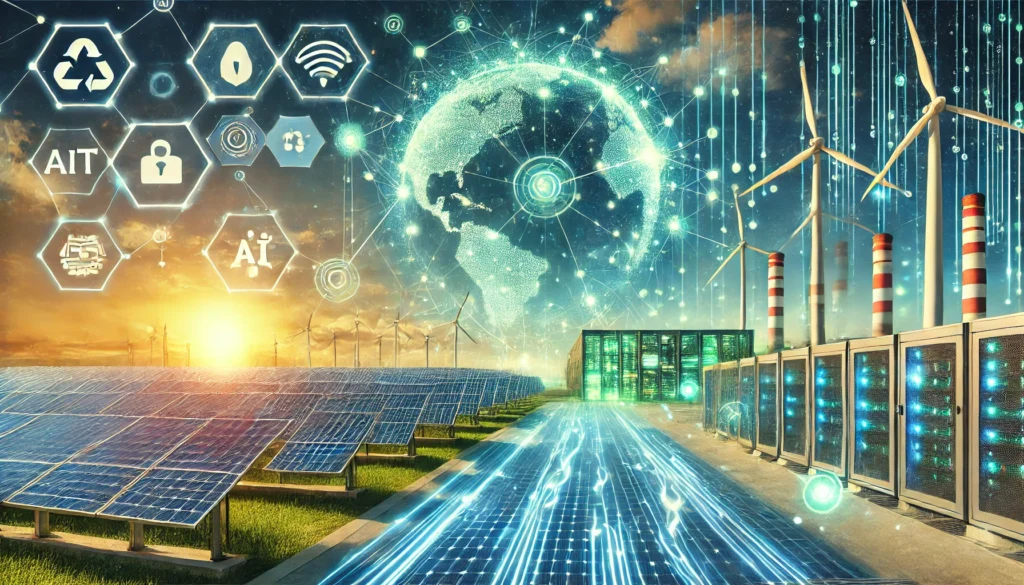How the Energy Sector and Green Energy Can Align with Digital Footprints
The global shift toward sustainability has placed the energy sector at the center of a critical transformation. The rise of green energy—such as solar, wind, and hydropower—offers a promising path to reduce carbon emissions. However, as the digital world becomes more pervasive, the energy sector must also grapple with its growing digital footprint. The intersection of these two forces reveals challenges and opportunities for a sustainable future.

Understanding Digital Footprints in the Energy Sector
Digital footprints refer to the environmental impact of technologies that support modern life. From data centers powering cloud services to IoT devices optimizing energy grids, the digital world requires immense energy. As green energy rises to meet global climate goals, the infrastructure supporting digital advancements—data centers, AI systems, blockchain applications—presents a paradox: these technologies can either hinder or accelerate sustainability efforts.
Challenges of Aligning Green Energy with Digitalization
- High Energy Consumption in Data Centers
Data centers, the backbone of digital transformation, consume vast amounts of electricity. According to studies, these facilities account for around 1% of global electricity demand, a figure expected to rise with increasing digitization. Ensuring these centers are powered by renewable energy is critical but challenging given fluctuating green energy supply. - E-Waste from IoT and Smart Technologies
The energy sector is increasingly reliant on IoT devices to monitor and optimize energy systems. While these devices enhance efficiency, their short lifespans contribute to growing e-waste, straining efforts to maintain sustainability. - Energy Storage Limitations
Renewable energy sources like solar and wind are intermittent, requiring robust storage solutions. However, battery production and disposal have their environmental costs, adding to the sector’s overall digital and physical footprint. - Blockchain and Cryptocurrency Energy Use
Innovations like blockchain promise transparency and efficiency in energy trading and management. However, the technology’s energy-intensive nature, especially in cryptocurrency mining, presents a contradiction to green energy goals.
Opportunities for Synergy
Despite the challenges, there are ways the energy sector can harmonize green energy initiatives with digital footprints:
- Green Data Centers
Many tech companies are already transitioning to renewable energy to power their data centers. Initiatives like Google’s carbon-neutral cloud services and Microsoft’s commitment to carbon negativity by 2030 exemplify how digital infrastructure can align with green energy. - AI for Energy Efficiency
Artificial intelligence and machine learning can optimize energy consumption, predict renewable energy output, and balance grids effectively. AI-driven analytics can also identify areas of inefficiency in digital operations, reducing energy waste. - Smart Grids and IoT
Smart grids, powered by IoT, enable precise energy management, matching supply with demand more effectively. These grids reduce reliance on fossil fuels during peak times, ensuring green energy is utilized efficiently. - Recycling and Circular Economy
Addressing the e-waste issue requires robust recycling programs and designing IoT devices for longevity and repairability. Companies embracing a circular economy model can significantly reduce their digital footprints. - Blockchain for Decentralized Energy
Despite its energy-intensive reputation, blockchain technology can support green energy by enabling decentralized energy trading. Peer-to-peer energy networks allow surplus energy producers (e.g., homeowners with solar panels) to sell their excess to consumers, promoting renewable energy use.
The Way Forward
The energy sector stands at a crossroads where embracing digitalization and sustainability is no longer optional—it’s imperative. By prioritizing renewable energy sources to power digital infrastructure and leveraging technology to enhance efficiency, the sector can achieve a balance between green energy goals and digital advancements.
Collaboration is essential. Governments, energy companies, and tech innovators must work together to establish policies and technologies that prioritize sustainability. For instance, regulations promoting renewable energy use in data centers or incentives for creating energy-efficient IoT devices can drive meaningful change.
Conclusion
The convergence of green energy and digital technology offers a unique opportunity to redefine the energy sector’s future. While challenges exist, the potential for a sustainable, digitally integrated energy ecosystem is within reach. By addressing the environmental impacts of digital footprints and investing in renewable solutions, the energy sector can lead the way toward a greener, more efficient world.

Hi, this is a comment.
To get started with moderating, editing, and deleting comments, please visit the Comments screen in the dashboard.
Commenter avatars come from Gravatar.